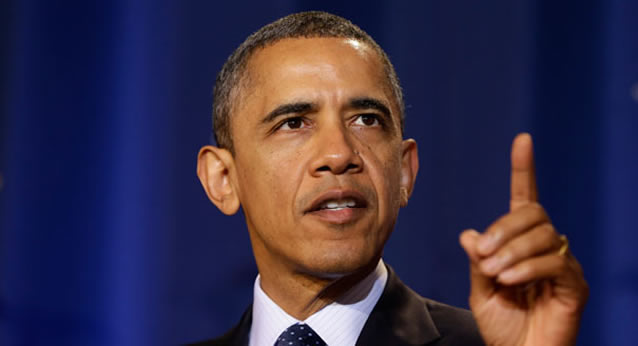US military plans against China exposed

Tom Peters
An article in the Wall Street Journal (WSJ) last Sunday revealed that the Pentagon has devised a range of “military options” to intervene against China in territorial disputes in the South and East China Seas. The options, described as “muscular” and “provocative,” include “increasing surveillance operations near China”, deploying nuclear-capable B-2 and B-52 bomber aircraft, and sending an aircraft carrier into the Taiwan Strait in response to any Chinese “provocation”.
The article was published amid President Obama’s four-country tour of Asia, during which he pledged to support Japan in any war with China, signed an agreement to give US forces far greater access to bases in the Philippines, and strengthened military integration with South Korea. The tour was aimed at assuring US allies that Washington remains committed to its “pivot to Asia”—the military encirclement of, and preparations for war against, China.
In the Philippines, Obama declared that “our goal is not to counter China”. His administration, however, has encouraged Japan and the Philippines to aggressively pursue their territorial claims against China. Last November, Washington denounced Beijing’s declaration of an air defence identification zone covering the Senkaku/Diaoyu Islands, which are claimed by China and Japan, then flew B-52 bombers unannounced into the zone.
Plans for war against China are far advanced. The Pentagon’s strategy, known as AirSea Battle, envisages a massive assault on China’s military infrastructure, using missiles, warplanes and warships, which could easily escalate into a nuclear war. The US and Japan are preparing for this eventuality by building anti-ballistic missile systems, using the supposed “threat” of North Korea as a pretext. The plans also include a naval blockade of Chinese shipping through South East Asia.
An article on Monday in the Financial Times entitled “US spreads military presence in Asia” provided further details of the US military build-up against China in Asia. After citing the new US-Philippine basing agreement signed on the same day, it pointed out that Pentagon officials have raised “the prospect of some sort of temporary presence in other countries such as Vietnam, Indonesia and Malaysia”. The FT also noted refurbishing World War II airstrips on Pacific Islands such as Tinian and Saipan in preparation for a war with China.
Chillingly, the article began by noting that Tinian was the airstrip from which the Enola Gay took off to drop an atomic bomb on the Japanese city of Hiroshima in 1945, and by implication, could be used in a nuclear war with China.
The WSJ reported that the Pentagon’s latest “action plan” is intended to address “concerns” held by Washington’s “closest allies in Asia” over the Obama administration’s willingness to confront Beijing.
The article notes that under the Pentagon’s new protocols, “any new moves . . . by China to assert its claims unilaterally would be met by an American military challenge intended to get Beijing to back down.”
It states that “provocative” actions “can be taken without risking a shooting war, officials say, citing intelligence that suggests there are divisions within the Chinese military establishment about how to respond.”
In other words, the US would deliberately provoke and threaten the Chinese regime with a military assault, gambling that Beijing will “back down” and accede to US demands.
While the WSJ ludicrously pretends that the Pentagon’s military strategy is “designed to avoid war, not push the US into war,” reckless actions such as deploying aircraft carriers to the sensitive Taiwan Strait would have extremely unpredictable consequences.
In 1996, President Bill Clinton’s administration sent two aircraft carriers to the Strait during a tense confrontation between China and Taiwan. Since then, China’s military has developed long range “anti-access/area denial” (A2/AD) missile systems, specifically to deter naval vessels from the Strait and elsewhere off China’s coast in the event of a conflict. Last year, Beijing responded to Taiwanese military exercises on the Penghu Islands by stationing hundreds of thousands of troops along the Strait, as well as hundreds of warplanes and 1,000 tactical ballistic missiles.
The WSJ itself noted that Chinese leaders told a visiting American delegation in February “that they didn’t take US warnings seriously.”
A “former administration official” who took part in the delegation told the paper: “Unfortunately, I don’t think they’re convinced by our muscularity . . . If we think we’re ready to pull the trigger but they don’t think that we’re ready to pull the trigger, that’s when bad things happen.”
These comments underscore the immense danger of war that is being driven by Washington’s military build-up and its willingness to “pull the trigger” against China or Russia. – wsws.









Comments